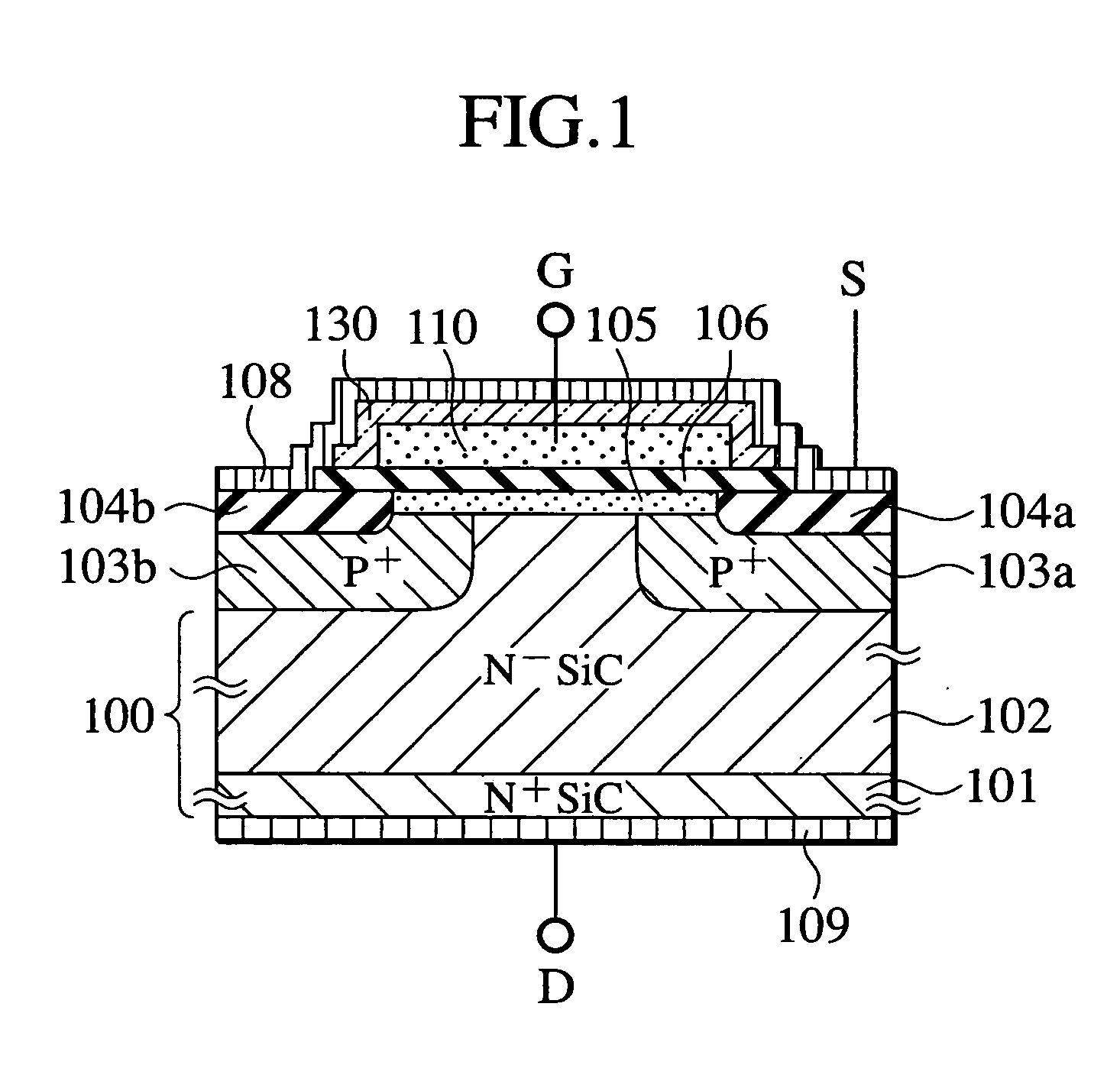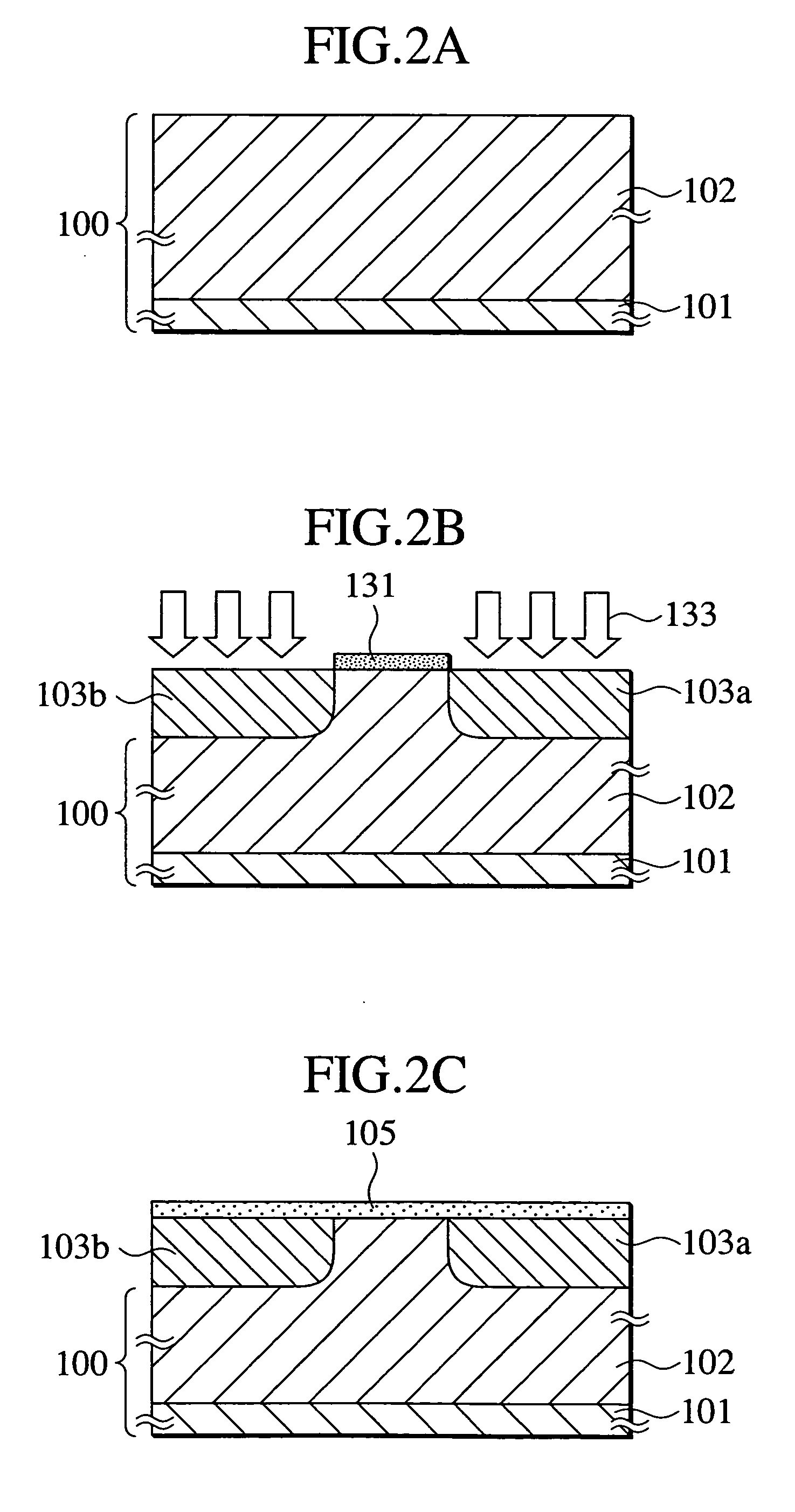Semiconductor device and method of manufacturing the same
a semiconductor and semiconductor technology, applied in semiconductor devices, diodes, electrical devices, etc., can solve the problems of limiting the improvement of cutoff performance by thinning the channel, the mobility of the channel cannot be increased, and the difficulty of completely depleting the surface channel region, etc., to achieve the effect of lifting the mobility and not increasing the mobility of the channel
- Summary
- Abstract
- Description
- Claims
- Application Information
AI Technical Summary
Benefits of technology
Problems solved by technology
Method used
Image
Examples
second embodiment
(Second Embodiment)
FIG. 5 is a sectional view showing a semiconductor device according to a second embodiment of the present invention. The semiconductor device has an n+-type substrate region 101 and an n−-type drain region 102 formed on the substrate region 101. The drain region 102 has a lower impurity concentration than the substrate region 101. At the surface of the drain region 102, p−-type base regions 103a and 103b are formed. At predetermined locations on the surfaces of the base regions 103a and 103b, trenches 132a, 132b, and 132c are formed through the base regions 103a and 103b up to the drain region 102. At predetermined locations on the surfaces of the base regions 103a and 103b, n+-type source regions 104a and 104b are formed. On the inner side walls of the trenches 132a, 132b, and 132c and on the base regions 103a and 103b, n−-type surface channel regions 105a, 105b, and 105c are formed to connect the source regions 104a and 104b to the drain region 102. On the surfa...
third embodiment
(Third Embodiment)
FIG. 6 is a sectional view showing a semiconductor device according to a third embodiment of the present invention. The semiconductor device has an n+-type substrate region 101 and a p−type epitaxial layer 120 formed on the substrate region 101. The epitaxial layer 120 has a lower impurity concentration than the substrate region 101. At predetermined locations on the surface of the epitaxial layer 120, an n+-type source region 104 and an n+-type drain region 112 are formed. On the surface of the epitaxial layer 120, there is formed an n−-type surface channel region 105 to connect the source region 104 to the drain region 112. On the surface channel region 105, a gate insulating film 106 is formed, and on the gate insulating film 106, a gate electrode 110 is formed from a p+-type polysilicon carbide which is a semiconductor material having a work function of 5.1 eV or over. In contact with the source region 104, a source electrode 108 is formed. In contact with the ...
fourth embodiment
(Fourth Embodiment)
FIGS. 7 and 8 show a semiconductor device according to a fourth embodiment of the present invention. This semiconductor device employs a silicon substrate.
FIG. 7 is a perspective view showing the semiconductor device of the fourth embodiment and FIG. 8 is a sectional view showing the same. For the sake of clear explanation, FIG. 7 strips off a metal film serving as a surface electrode and a surface protection film. It is naturally possible to employ these metal film electrode and surface protection film. The semiconductor device has an n+-type substrate region 201, an n-type drain region 202, an n+-type source region 204, an insulating film 207, an insulated electrode 205, and a p-type base region 203. The insulating film 207 and insulated electrode 205 are formed in a U-shape in a trench having substantially vertical side walls. The insulated electrode 205 is insulated from the drain region 202 by the insulating film 207. In FIG. 7, the source region 204 is in c...
PUM
 Login to View More
Login to View More Abstract
Description
Claims
Application Information
 Login to View More
Login to View More - R&D
- Intellectual Property
- Life Sciences
- Materials
- Tech Scout
- Unparalleled Data Quality
- Higher Quality Content
- 60% Fewer Hallucinations
Browse by: Latest US Patents, China's latest patents, Technical Efficacy Thesaurus, Application Domain, Technology Topic, Popular Technical Reports.
© 2025 PatSnap. All rights reserved.Legal|Privacy policy|Modern Slavery Act Transparency Statement|Sitemap|About US| Contact US: help@patsnap.com



